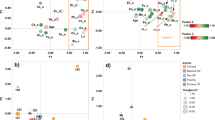Abstract
The Japan Society for Occupational Health started to recommend an occupational exposure limit based on biological monitoring (OEL-B) in 1993. Up to 1998, OEL-Bs for mercury, lead, hexane and 3,3′-dichloro-4,4′-diaminodiphenylmethane had been adopted and those for 17 chemical substances (arsenic, cadmium, chromium, nickel, acetone, methanol, benzene, toluene, xylene, styrene, tetrachloroethylene, trichloroethylene, N,N-dimethylacetoamide, N,N-dimethylformamide,carbon disulfide, carbon monoxide, and organophospate insecticides) are in preparation.
Similar content being viewed by others
Author information
Authors and Affiliations
Additional information
Received: 13 January 1999 / Accepted: 16 January 1999
Rights and permissions
About this article
Cite this article
Omae, K., Takebayashi, T. & Sakurai, H. Occupational exposure limits based on biological monitoring: the Japan Society for Occupational Health. Int Arch Occup Environ Health 72, 271–273 (1999). https://doi.org/10.1007/s004200050372
Issue Date:
DOI: https://doi.org/10.1007/s004200050372




